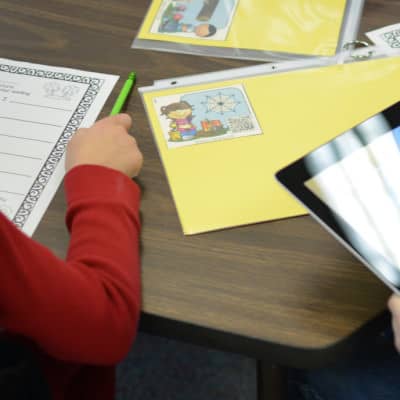
When I was invited to tour Rutherford County Schools and see their “Going G.L.O.B.A.L.” 1:1 device initiative, I didn’t know what to expect. The last time I was in a school was when I worked as a teacher’s assistant in a special education classroom for 3rd through 5th graders in 2007. That classroom in rural Watauga County was lucky enough to have a couple ancient computers for all teachers and students to share. I was excited to see how things had changed in classrooms over the past eight years.
Rutherford County
Rutherford County is one of the poorest counties in North Carolina. In 2013, 33.7 percent of children lived in food insecure homes and 72.1 percent of students were eligible for free or reduced lunch. Devastated by the loss of textile and manufacturing industries, the unemployment rate spiked in 2010 at 19 percent.
Currently, the public school system is the largest employer in the county and the unemployment rate has been dropping steadily — it was 7.2 percent in December 2014.

This is a community where kids are bound by place — both economically and geographically. Rutherford County Schools is working to break down barriers and provide opportunities for the whole county by putting the whole world in reach of the students. For many homes, the laptops provided by the school system are the first that have been seen inside their walls at all. By providing devices for all students and teachers — as well as equipping all classrooms with internet-connected interactive whiteboards — they are giving the kids the opportunity to grow up in an age of technology and become the future’s tech savvy workforce.
Going G.L.O.B.A.L.
In 2011, Rutherford County Schools implemented their “Going G.L.O.B.A.L.” initiative — Growing Learning Opportunities Beyond All Limits. This 1:1 program provides laptops for every teacher and 6-12th grade student to use 24 hours per day, 7 days per week. Laptop carts and iPads are available to be used daily in any elementary school classroom. Every school building is equipped with Wi-Fi internet access, and Promethean Boards (interactive whiteboards) are in every classroom.
During the tour, I had the opportunity to see how technology is engaging the minds of elementary school students at Ellenboro Elementary and Sunshine Elementary.
At Ellenboro Elementary, second graders worked in pairs to create illustrations for their partner’s stories using descriptive language. Third graders built digital zoos and practiced calculating the areas of different animal enclosures. A fifth grade class worked together to solve riddles from The Hobbit, which were compiled into an iBook built by the teacher and displayed on their classroom’s Promethean Board.
At Sunshine Elementary, kindergarteners practiced spelling sight words and checked their work using QR (quick response) codes on their worksheets. Second graders worked in groups to research animals and make a Keynote (a presentation program) slide about their animal. A group of fifth graders on the robotics team continued their work programming a robot built using Legos to complete a variety of tasks in an upcoming competition.
Perhaps the most exciting part of the tour for me was seeing the excitement and love of learning taking place in the Sunshine media center. Several fourth grade classes gathered together to work at different stations throughout the media center and do a variety of science experiments.
There were stations for learning about static electricity, conductors and insulators, and magnetics. Another station was set up for students to build complex circuit boards. There was also a station where students were building and programming robots.
I didn’t learn about much of these things until high school and seeing the excitement of scientific discovery happening in the elementary school media center was rejuvenating.
Graduation
Rutherford County’s dropout rate is consistently above the state average and their graduation rate is consistently below the state average. Some students simply have to make the hard decision of finishing school versus dropping out and getting a job so they can help provide for their family. But in the 2013-14 school year, the dropout rate was down to 3.4 percent — the best it has ever been. Their four-year cohort graduation rate was 78.6 percent — the closest it has ever been to the state average.

During the tour, Superintendent Dr. Janet Mason said, “We’re closing in on that gap with the other districts. We’re not where we want to be, and if you know me and you know the people who work here, we’re not ever going to be where we want to be because when we get to that next goal we will already have an insight into our next goal for improvement.”
As I walked through the schools, the focus was clearly on succeeding in school and graduating. In the main hallway of Ellenboro Elementary School pennants of different colleges are plastered on the wall asking students, “Where will you go to college?” Throughout the halls of East Rutherford High School — ranked bronze by US News & World Report as one of the best high schools — are posters of each college or university where a student has been accepted for the next school year, complete with the smiling faces of the college class of 2019.












